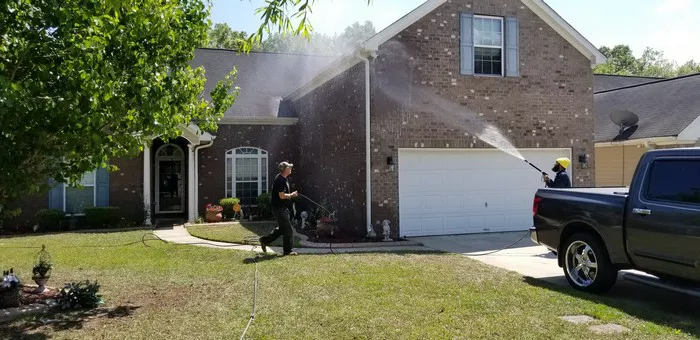Pressure washer pumps are essential components of pressure washing machines, serving as the heart of the equipment. Understanding their lifespan, factors influencing longevity, types, maintenance, and economic considerations surrounding replacement and repair is crucial for users and operators. This essay aims to provide a comprehensive analysis of these aspects to guide users in maximizing the lifespan and efficiency of their pressure washer pumps.
Average Lifespan
The average lifespan of pressure washer pumps is a critical aspect for users to consider when investing in this equipment. Typically, pressure washer pumps last between 60 to 100 hours of use. However, this figure can vary significantly based on various factors.
Factors Affecting Lifespan
Quality of Materials
The quality of materials used in manufacturing pressure washer pumps plays a significant role in determining their lifespan. Pumps constructed from high-grade materials, such as stainless steel or brass, tend to be more durable and have a longer operational life compared to those made from cheaper materials like aluminum or plastic.
Amount of Pressure Used
The amount of pressure applied during operation directly impacts the wear and tear experienced by the pump components. Excessive pressure can lead to premature failure of seals, valves, and other vital parts, thereby reducing the overall lifespan of the pump. Users should adhere to recommended pressure settings and avoid exceeding the pump’s capabilities to prolong its longevity.
Maintenance Practices
Regular maintenance is crucial for extending the lifespan of pressure washer pumps. Neglecting routine maintenance tasks, such as cleaning filters, inspecting seals, and lubricating moving parts, can accelerate wear and increase the risk of pump failure. By implementing a proactive maintenance schedule and addressing any issues promptly, users can mitigate premature wear and ensure optimal performance.
Types of Pumps
Understanding the different types of pressure washer pumps is essential for selecting the most suitable option based on specific requirements and desired longevity.
Wobble Plate
Wobble plate pumps are commonly found in entry-level pressure washers due to their simplicity and cost-effectiveness. However, they typically have a shorter lifespan compared to other types of pumps due to their design limitations and lower durability.
Swash Plate or Axial Cam
Swash plate or axial cam pumps are more robust and efficient compared to wobble plate pumps. They utilize a swash plate mechanism to generate high-pressure water flow, making them suitable for medium-duty applications. While they offer improved longevity compared to wobble plate pumps, they may still experience wear over time, particularly under heavy usage.
Triplex Plunger
Triplex plunger pumps are the most durable and long-lasting among pressure washer pump types. They feature three plungers arranged in a triangular configuration, allowing for smoother operation and higher pressure output. Triplex plunger pumps are commonly found in commercial-grade and industrial pressure washers, where reliability and longevity are paramount.
Maintenance Tips
Proper maintenance is essential for preserving the longevity and performance of pressure washer pumps. Here are some key maintenance tips to prolong the lifespan of your pump:
Proper Storage
Store the pressure washer in a clean, dry environment away from extreme temperatures and humidity to prevent corrosion and damage to pump components.
Regular Servicing
Schedule routine inspections and servicing of the pump, including checking for leaks, replacing worn-out seals or valves, and cleaning filters and intake screens to ensure optimal performance.
Avoid Common Issues
Take preventive measures to avoid common issues such as overheating and cavitation by maintaining proper water flow, using suitable detergents, and adhering to recommended operating procedures.
Replacement and Repair
Determining when to replace a pressure washer pump depends on various factors, including the extent of damage, cost of repair, and overall economic considerations.
Guidance on Replacement
If the pump experiences significant damage or wear that affects its performance and reliability, it may be more cost-effective to replace it rather than investing in extensive repairs. Additionally, upgrading to a higher quality or more durable pump may provide better long-term value.
Economic Considerations
When deciding between repair and replacement, users should weigh the cost of repairs against the expected lifespan and performance of the pump. In some cases, investing in repairs may be worthwhile if the pump is relatively new or if the repairs are minor and cost-effective.
Cost Considerations
Initial Cost versus Long-Term Value
While cheaper pressure washer pumps may offer upfront cost savings, they often lack the durability and reliability of higher-quality models. Investing in a higher-grade pump may require a larger initial investment but can result in significant long-term savings through reduced maintenance costs, fewer repairs, and extended lifespan.
Conclusion
In conclusion, understanding the average lifespan, factors influencing longevity, types, maintenance practices, and economic considerations surrounding pressure washer pumps is essential for users and operators. By implementing proactive maintenance strategies, selecting the appropriate pump type, and considering long-term value over initial cost, users can maximize the lifespan and efficiency of their pressure washer pumps, ultimately enhancing productivity and reducing operating costs.

